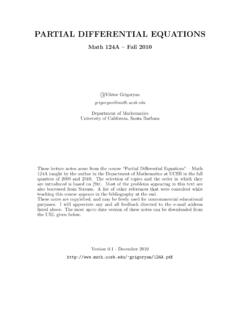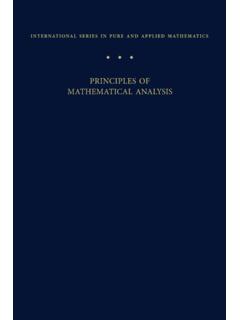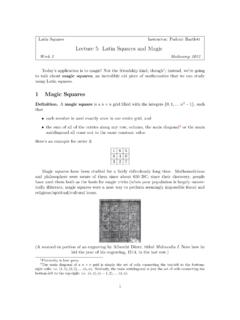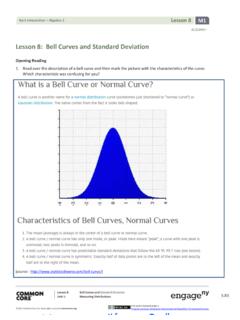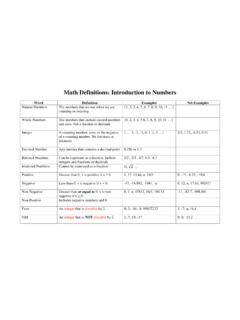Transcription of Factoring Cubic Polynomials - UC Santa Barbara
1 Factoring Cubic PolynomialsMarch 3, 2016A Cubic polynomial is of the formp(x) =a3x3+a2x2+a1x+ Fundamental Theorem of Algebra guarantees that ifa0, a1, a2, a3are all real numbers, then wecan factor my polynomial into the formp(x) =a3(x b1)(x2+b2c+b3).In other words, I can always factor my Cubic polynomial into the product of a first degree polynomialand a second degree polynomial. Sometimes we can factor even further into the formp(x) =a3(x c1)(x c2)(x c3),wherec1, c2, c3are real numbers, but this is not always the how do we find such a factorization? The following are two methods which I by GroupingThis is by far the nicest method of the two, but it only works in some cases. Consider the polynomialp(x) =x3 4x2+ 3x group the first two terms and the last two terms together:p(x) = (x3 4x2) + (3x 12)and then we pull out the common factors:p(x) =x2(x 4) + 3(x 4).Notice now that these two terms now havex 4 in common with each other; factor it out:p(x) = (x 4)(x2+ 3).
2 X2+ 3 is an irreducible quadratic, so it cannot factor into real terms. However, we can use thequadratic formula to solve for the Using the Rational root TheoremThis method works as long as the coefficientsa0, a1, a2, a3are all rational numbers. The RationalRoot Theorem says that the possible roots of a polynomial are the factors of the last term dividedby the factors of the first term. In our case, since we are Factoring the Cubic polynomial above, thepossible roots are factors ofa0factors the possible roots of the following (x) = 4x2+ 8x 5x+ 10 The factors of 10 are 1,2,5,10, and the factors of 4 are 1,2, the possible zeros ofp(x) are 1,2,5,101,2,4= 1,12,14,2,5,52,54, (x) = x3+ 9x2 13x+ 18 The factors of 18 are 1,2,3,6,9 and the factors of 1 are the possible zeros ofp(x) are 1,2,3,6,9 1= 1,2,3,6, , let s put the theorem to action. Consider the polynomialp(x) =x3+ 5x2 2x cannot factor this polynomial by grouping, so we turn to the Rational root Theorem.
3 Thefactors of 24 are 1,2,3,4,6,8,12,24, and the possible factors of 1 are 1. Therefore the possiblezeros ofp(x) are 1,2,3,4,6,8,12,24. We will then plug each of these numbers intop(x) until wefind a root such thatp= 0. Let s start with 1:p(1) = 1 + 5 2 246= 0,and so 1 is not a zero. Let s try -1:p( 1) = 1 + 5 + 2 246= 0,and so -1 is not a zero. Let s try 2:p(2) = 8 + 20 4 24 = 0,and so 2 is a zero. This means thatx 2 is a factor of our polynomial. Now we use long divisionto dividep(x) byx 2 to find out what the other possible zeros could be:x3+ 5x2 2x 24x 2=x2+ 7x+ means thatp(x) = (x 2)(x2+ 7x+ 12). The last term factors nicely:p(x) = (x 2)(x+ 3)(x+ 4),and we are
